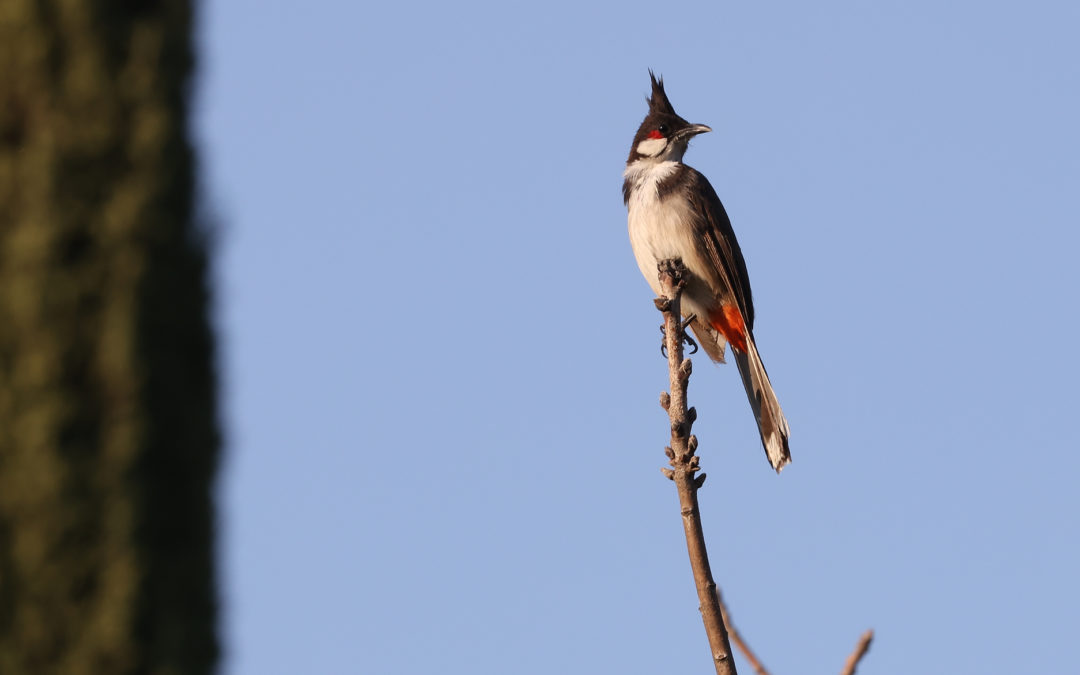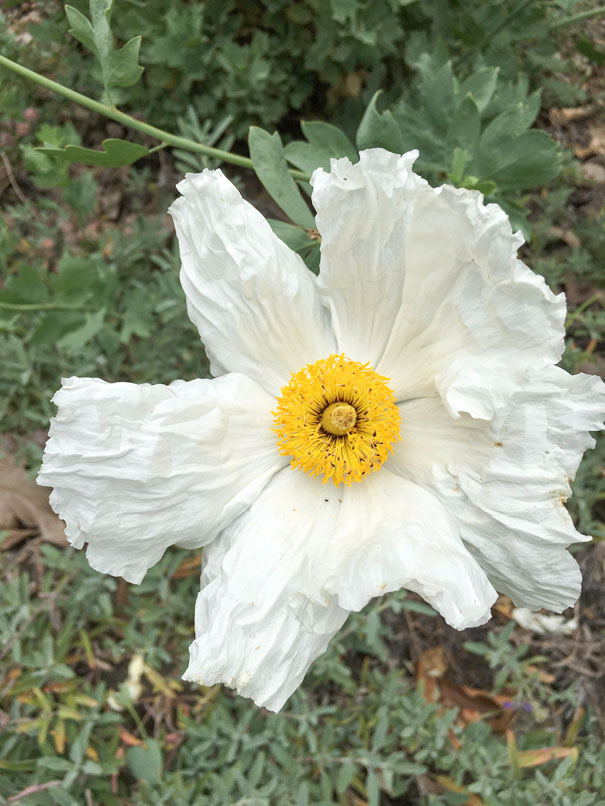Pictured: Red-whiskered Bulbul at Arlington Garden. Credit: William Hallstrom.
One of the most frequently seen non-native bird in Arlington Garden and surrounding areas is the Red-whiskered Bulbul (Pycnonotus jocosus). This berry-eating bird, originally native to tropical Asia, has been introduced to Australia, Florida, Hawaii, and Los Angeles. For decades, the Red-whiskered Bulbul seemed to be mostly confined to its original site of introduction (in 1968): the Huntington Botanical Gardens. While they have more recently started to expand to other parts of greater Los Angeles, they are still not commonly seen beyond the Pasadena, San Marino, and western San Gabriel Valley area.
Another bird originally from tropical Asia, the Scaly-breasted Munia or Nutmeg Mannikin (Lonchura punctulata) has been introduced into our area a bit more recently. This bird tends to travel in large flocks, and since it travels often, it can be seen in one locale today and be gone tomorrow. I personally only recall seeing these in Arlington Garden since 2020.
No discussion of non-native bird species in Pasadena and the San Gabriel Valley is complete, however, without talking about our species of feral parrots. There are a lot of myths surrounding the origin of our parrot flocks. One legend has it that at least some of them descend from parrots that escaped a pet shop that caught fire in 1969. But this has never been confirmed. The chaparral and oak woodlands could not have sustained these species that evolved in tropical forest ecosystems, but our palm, ficus, and other fruit trees provide these parrots with plenty to eat and space to nest.
While there are nearly a dozen species that have been established in the state, all with different geographic distributions, the most common species seen in our area is the Red-crowned Parrot (Amazona viridigenalis), a species that is endangered in its native Eastern Mexico but doing quite well here. Other species that are seen in and close to Arlington Garden include the Red-lored Amazon parrot (Amazona autumnalis), Yellow-headed Amazon (Amazona oratrix), and the Yellow-chevroned Parakeet (Brotogeris chiriri). These birds most definitely make a scene, are quite noisy, and descend upon fruit and seed-bearing trees in large flocks.
All of these non-native bird species that have become naturalized in our local suburban ecosystem were part of the pet trade.
The one other non-native species that one is likely to see in the Garden needs little introduction because its presence is so familiar to nearly every human on the planet, and it has adapted to the most densely built of urban areas. This of course is the House Sparrow (Passer domesticus). The genus is that of “old-world” sparrows. And while the species has not literally been domesticated, it has nonetheless become so used to human presence, that it is rarely found in wilderness areas. It perhaps the only species that was introduced beyond its native Eurasia, at least in part, as a stowaway on ships similar to the house mouse, black rat, and Norway rat (the three species of rodents that have become parasitic on human settlements worldwide throughout history).
Bob Gorcik volunteers in Arlington Garden when his work schedule allows him to do so. He has been a birder since he was in middle school.




Recent Comments